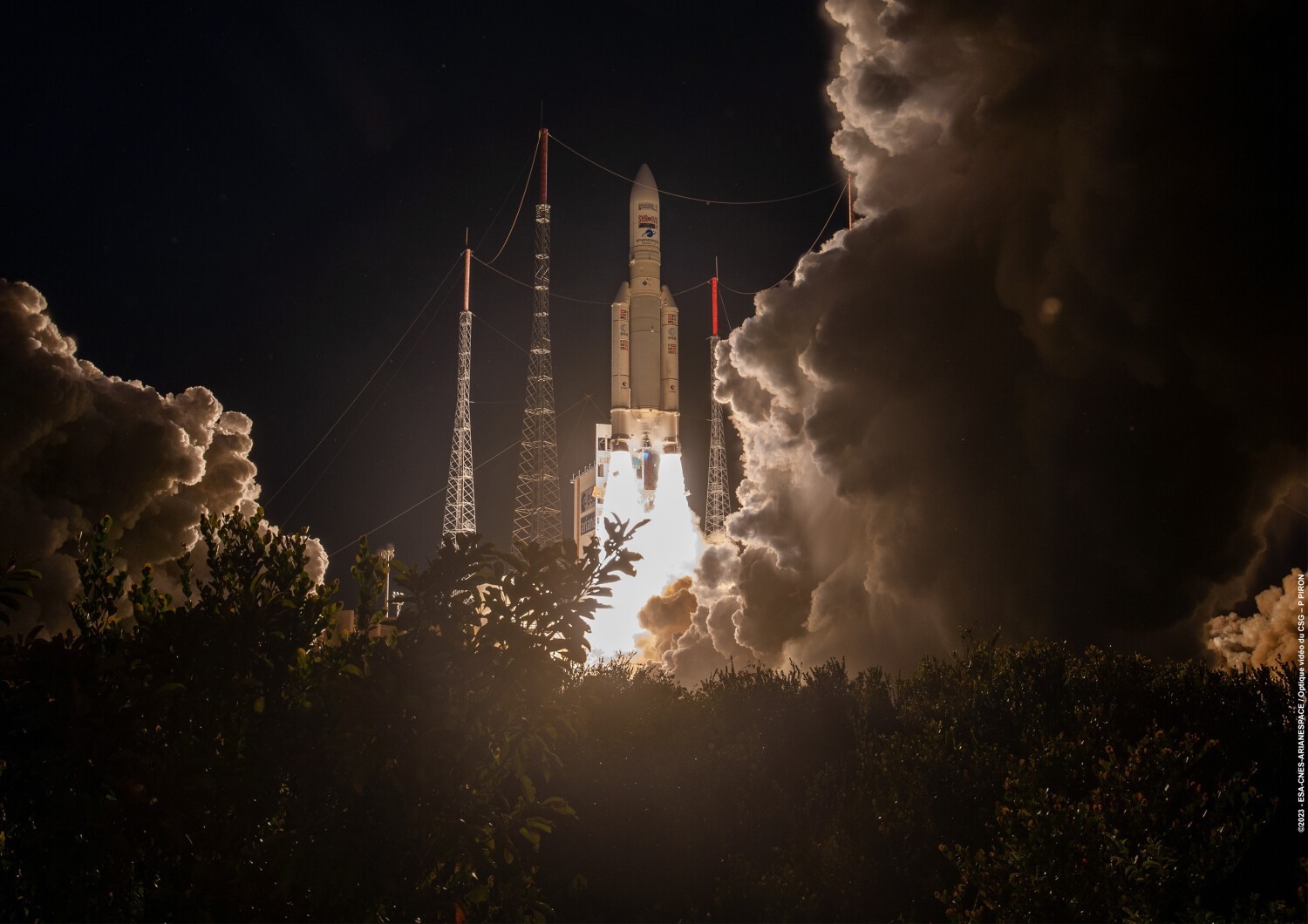Latest News

Arianespace launches the final Ariane 5 mission on July 5 from French Guiana. Photo: Arianespace
Arianespace launched its final Ariane 5 mission on Wednesday evening from French Guiana, marking the end of an era for the workhorse rocket. With the final launch, Europe does not have heavy-lift capacity while it waits for the debut of its successor, Ariane 6.
“Ariane 5 is now taking its place in the annals of global space history. This final successful mission demonstrates once again its supreme reliability in the service of European autonomy and rounds off an exceptional career distinguished by a succession of technological and industrial achievements,” said Martin Sion, CEO of ArianeGroup, commemorating the rocket’s significance.
The final mission took off at 7 p.m. local time in Kourou, French Guiana, on July 5, with the Heinrich-Hertz-Mission, built by OHB for the German space agency DLR, and Syracuse 4B, built by Airbus Defence and Space and Thales Alenia Space for the French government’s defense procurement and technology agency DGA. This mission lasted about 33 minutes from lift-off to release of the final payload. All parties confirmed the satellites successfully reached Geostationary Transfer Orbit (GTO).
The Syracuse 4B satellite will provide secure communications for the French Armed Forces, including increased capacity and flexibility and a broader coverage area. 4B and its sister satellite 4A — launched in 2021 — will replace the operational Syracuse 3A and Syracuse 3B satellites currently in orbit.
Germany’s Heinrich-Hertz-Mission will test new technologies for satellite communication, including on-board processing. It is the first launch of a dedicated German communications satellite for researching and testing new technologies and communications scenarios.
This was the Ariane 5’s 117th and final mission. In its lifetime, the rocket placed 197 satellites into Geostationary Orbit (GEO), and deployed 239 satellites total. The rocket had a pristine launch record over the past 20 years. It had full and partial failures in its first two missions in 1996 and 1997, but its last full failure was in 2002. Ariane 5 launched many significant science missions including the James Webb Space Telescope and Europe’s JUICE space probe.
“Over its career, Ariane 5 has served 65 institutional and commercial customers from 30 countries. Ariane 5’s success heralds a promising career for Ariane 6,” said Stéphane Israël, CEO of Arianespace.
Now, Europe faces a gap in heavy-lift launch capacity as the Ariane 5 successor, Ariane 6, is not yet ready to launch. The European Space Agency has said Ariane 6 will debut by the end of this year, but the rocket has a number of milestones to complete before then.
The most recent update from the task force for the Ariane 6 rocket on June 8 said development has begun the ground combined test sequence in French Guiana, which will include two wet rehearsals and a long firing test of the lower stage on the launch pad. This sequence is a main prerequisite for the inaugural flight.
Launch vehicle assembly is not set to start until November. This includes a full-fledged flight configuration and a final wet dress rehearsal.
“Together we are now taking up the challenge of Ariane 6, the beneficiary of the experience acquired with Ariane 5,” Sion of ArianeGroup added. “It will be able to evolve and play a full role in guaranteeing independent, sustainable access to space for Europe, in a context of major strategic, economic and environmental challenges, to meet the needs of its institutional and commercial customers.”
Stay connected and get ahead with the leading source of industry intel!
Subscribe Now